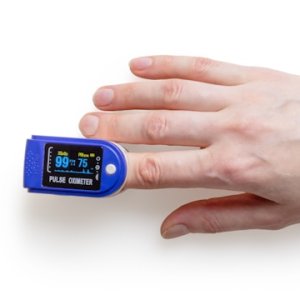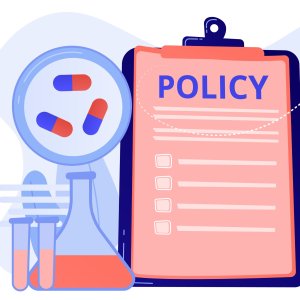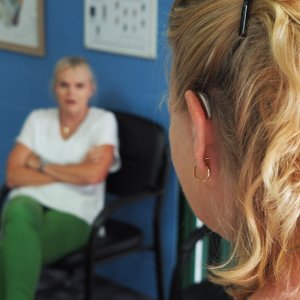Tijuana Equals Adaptability and Success in Northern Mexico

STORY INLINE POST
Q: What is the importance the Mexican plant has for Össur globally? What percentage of prosthetics does it manufacture?
A: Our central offices are located in Iceland but we are present with corporate offices in the US. The head of the Americas division is located in Foothill Ranch, California. Tijuana is the only manufacturing plant in Mexico and it has shown the most growth in the past year because it continues to evolve both in size and complexity. It was founded in September 2010 and began with small operations focused on molding and plastic injection. In six years it has grown from 40 employees to over 450 employees. The number of diverse technologies we offer has also increased as we now offer radiofrequency, ultrasonic welding, solvent bonding, stamping presses, pad printing, metal cutting by waterjet and carbon fiber processing. We have one of the broadest ranges of technological capabilities under one roof in Tijuana. We specialize in orthopedics and active functional prosthetics and we are the only plant that produces these types of components in Baja California. DGS, a high level division that shares ownership with Össur, also operates in our plant and in less than a year they have gone from 11 employees to 150. They produce 300 units per day, which are different types of active hearing aids.
Our Mexico operation has teams capable of managing cutting edge technology. We are successfully operating in Tijuana with state-of-the-art machinery, processing titanium-based components with the most stringent level of tolerances, products and components that at one point would only be manufactured in our home base in Iceland but nowadays manufacturing is migrating toward Tijuana.
Our Mexican plant only manufactures about 15 percent of the prosthetics but strategically this plant is the most important as it is close to the US market, which is one of our biggest.
Q: What makes you different from your competitors?
A: Our products are custom made, that is the main difference. We are also willing to invest the highest level of technology in local operations. Many people still use Mexico for low-tech operations, but our corporate headquarters leverages the Mexican workforce’s abilities for higher technology, products with higher margins. We shifted operations to Tijuana to keep costs down as our competitors manufacture mostly in Europe and a little in the US.
Q: Do you work with the government and universities to ensure you have human talent here in Össur?
A: We are trying to strengthen our links with local universities. We want to invest in trade schools, putting German/Japanese technology and equipment’s into schools and universities in Tijuana to develop our future engineers and technicians. We believe deeply in being in contact with the community as tomorrow we will be hiring those human resources. This week we will be developing our strategic plan for the coming fiscal year. We hope to work with universities to design curricula with our needs in mind. This means a generation of engineers will graduate with the know-how the local industry needs. This is a win-win for both companies and students.
Q: What do you hope to gain from the acquisition of TouchBionics in terms of technology and market share?
A: We recently acquired TouchBionics, a company that manufactures upper body prosthetics, as we want to advance into this field. What Össur does is replicate the functioning of the human body. Our products are noninvasive and aim to restore our patients to a normal life, so people can run and climb stairs again. TouchBionics developed an interface linking the neural system and mechanical components of a prosthetic, meaning the prosthetic will be controlled by the brain like a human limb. Once the acquisition is complete, we will add their specialties to ours. This acquisition will put our company in its next technological level. The new technology opens more doors for a product already mechanically and functionally good, seamlessly integrating those products on to the human body is the future of the industry and its true contribution to Össur.
Q: What other innovative products do you produce?
A: We make high-end hearing aids. In a nutshell, the audiologist injects a rubber compound into the ear of a patient, it solidifies, performs a 3D scan, sends the digital file here to us in Tijuana and then 3D printers generate the model in plaster designed precisely for each person’s individual ear. We produce 300 of these biometric hearing aids daily. Each employee here in Tijuana is trained for three to six months to manually piece together the components of this model. Once they can piece it together with a microscope, we initiate functional tests of the apparatus to detect if there is any feedback. If so, we need to adjust the components by micrometers so the patient can hear with no echoes or other noises. We are talking about linking these hearing aids to smartphones via Bluetooth. Our new generation of products will include this feature and will link to any household electronics with Bluetooth. Typically, a hearing aid user must face their interlocutor or the sound they wish to hear. No more. Our technology will scan the room, identify the walls and distances, and the user will be able to hear speakers to the side and behind them.
Q: Who are the main consumers of your products?
A: Diabetes causes 2 million people a year to lose a limb. There are of course amputees from the military and accidents happen but our main market is diabetes. We also manufacture braces and soft goods to support other joints in the body. Extreme sports impact the human body in stressful ways that were unheard of 20 years ago and we need to manufacture preventive equipment. For example, a 70-year-old playing tennis will wear one of our braces to prevent an injury. That we live longer, are active to a more advanced age and the rise of extreme sports contribute to a growing market.
Q: Will future growth be organic or inorganic?
A: It has been both so far and our strategy remains the same. We want to grow organically but we continue to be on the lookout for potential acquisitions related to our products or which could complement them. Inorganic growth such as the acquisition of TouchBionics can be extremely significant in terms of long-term strategy. There is also much potential for organic growth in Mexico. We are seeing increasing technology levels and volumes of production in Mexico.
Q: What are your expansion plans in Mexico?
A: For the moment we plan to stay in Tijuana due to its ideal location. Corporate America for Össur and R&D is an hour away. Being close to our R&D center of excellence is key for the design engineers to be in contact with those that will manufacture their products.
More broadly, another competitive advantage is that when comparing labor costs in China and Mexico, all points to Mexico. It is most interesting when asked: why Tijuana specifically? From a strategic point of view, and from a labor force point of view, I can tell you that Guanajuato and Nuevo Leon for instance have experts in textile, Guadalajara and Queretaro have automobile experts but the people of Tijuana are experts in an impressive broad range of industries, including electronics, aerospace, food processing and medical devices.
The Tijuana workforce has been exposed to working in all of these industries. Besides that, the diversity of international corporate offices in the city is second to none worldwide. The working people in Tijuana have developed a trait that you cannot buy with money. That trait is “adaptability”.
Our strategy for 2017 revolves around three concepts: innovation, efficiency and growth. Tijuana encompasses all three because of its demonstrated capabilities. Technological proficiency is no longer a question mark when it comes to Mexico.























